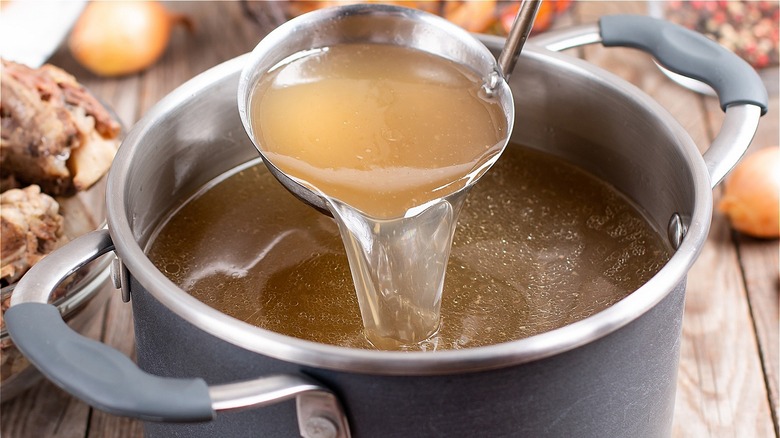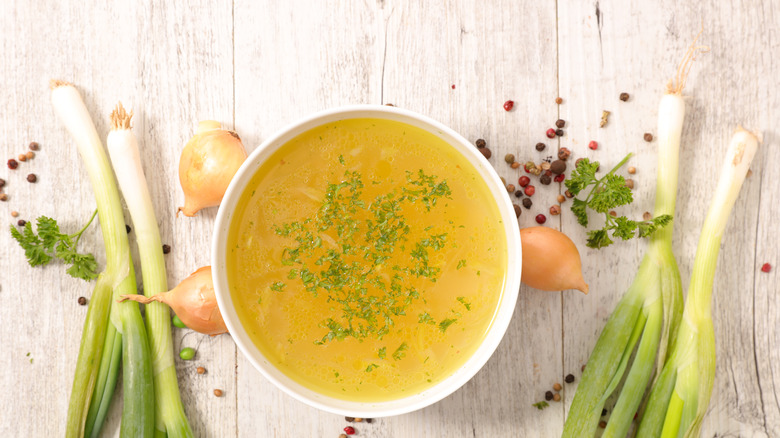The Easiest Way To Make Homemade Chicken Stock
When you think of making chicken broth, you probably think of unwrapping a little foil packet of bouillon and plopping it in some water or maybe spooning out some concentrate from a tiny jar. We could go through popular broth brands, but there's another way to make broth that's easy, economical, and environmentally friendly. It might sound daunting to make your own chicken broth but once you know the process, it's as easy as set and forget. And we've got a few tricks you can use to make it even easier.
You may be wondering how making your own broth is environmentally friendly. It helps you reduce your food waste by using up what you'd otherwise throw out (per The Farmers Almanac). If you do it the way many restaurants do, there's no need to go chopping up a whole bunch of veggies to add to your broth. Just collect your veggie cuttings and peelings in a freezer-safe container in your freezer to prep for the broth, or put aside all your cuttings from a big meal (like a holiday dinner) and save them for broth (per Serious Eats). Herb stalks, celery leaves and bases, onion peels, garlic skins, and carrot trimmings are all perfect for adding to your chicken broth, but you can get a little more adventurous too and add lemon rinds for a little zest and other veggie cuttings you come across like mushroom stalks or pepper cuttings for depth of flavor.
Stock tips
Now that you know what you're putting in your pot, it's time to get to the trick that deals with boiling that sucker. Gather your container of frozen trimmings and chicken carcass, or whatever you use for your own classic chicken stock recipe, such as whole wings, giblets, or gizzards (per MasterClass). And then pop them in your slow cooker for hassle-free cooking (per The Guardian). Once it boils, reduce the heat to a low simmer and cover. Chef Thomas Keller recommends adding a dash of apple cider vinegar or white wine vinegar once the broth is at a simmer to harness the full nutritional power of the chicken bones (per MasterClass). Then all the attention you'll have to pay to it is to periodically add more water.
Leave your stock to bubble all day. When it's done, or you've had enough of waiting (it's probably done), pass the liquid through a fine mesh strainer (per The Farmer's Almanac). Fresh broth will keep up to three days in the fridge or you can store it safely in your freezer.

